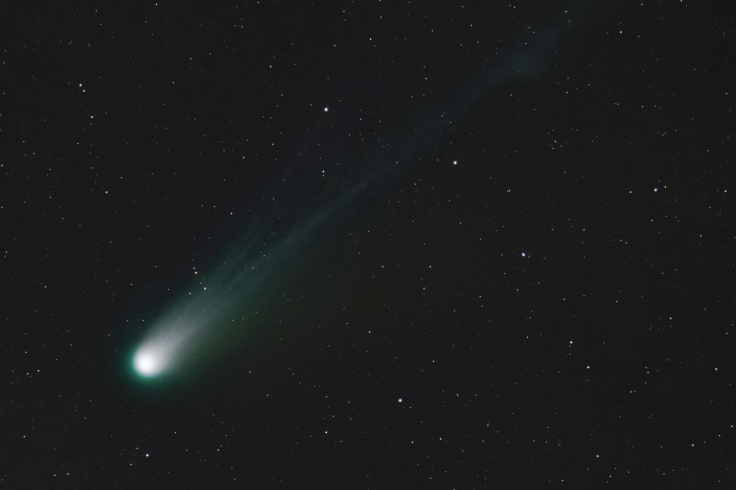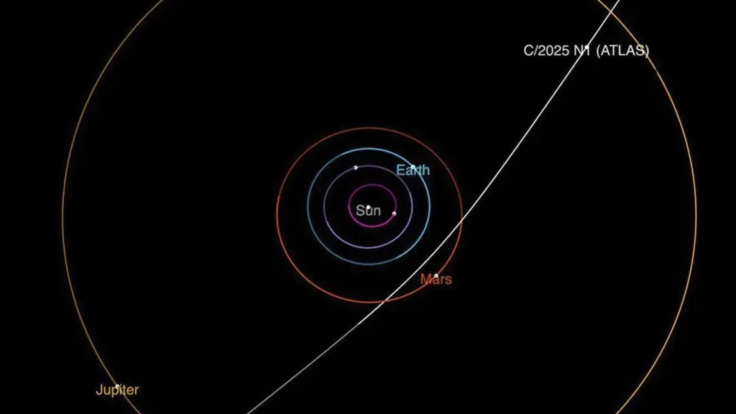Harvard astrophysicist Avi Loeb has renewed speculation about the mysterious interstellar object 3I/ATLAS ahead of its closest approach to the Sun, suggesting that it could behave like a ‘mothership’ releasing small probes as it passes through the inner Solar System.
Loeb, who leads Harvard’s Galileo Project, said the object officially classified as a comet will reach perihelion on 29 October 2025, coming within about 203 million kilometres (1.36 astronomical units) of the Sun. At that point, he explained, a natural comet would typically experience heating, fragmentation, or increased outgassing. But if the object were an engineered craft, it might instead ‘manoeuvre or deploy mini-probes toward nearby planets.’
‘For a spacecraft, perihelion is the optimal time for acceleration or deceleration by an engine impulse, thanks to the gravitational assist from the Sun,’ Loeb wrote in a recent Medium post, noting that the period could also favour the release of smaller objects from a larger ‘mothership.’
Unusual Observations and Missing Data
In a Newsmax interview, Loeb said NASA has yet to release recent imagery of 3I/ATLAS, citing delays reportedly linked to the US government shutdown. He told anchor Rob Schmitt that his team had requested the data directly from the instrument’s lead investigator at the University of Arizona but received no reply.
‘We cannot observe it from Earth right now because it’s behind the Sun,’ he said. ‘But if it re-emerges and we notice smaller objects moving toward the planets, that could indicate it’s releasing probes.’
Loeb added that 3I/ATLAS is estimated to have a mass of roughly 33 billion tons and that even a small deviation in its trajectory could have scientific and potentially existential implications. He described the situation as a possible ‘black swan event,’ urging continuous monitoring once the object becomes visible again in early November.
Trajectory and Key Dates
According to Loeb’s published timeline, 3I/ATLAS, the third known interstellar object detected in our Solar System, will pass 97 million kilometres from Venus on November 3, and later approach 267 million kilometres from Earth on 19 December 2025.
This diagram provided by NASA/JPL-Caltech shows the trajectory of interstellar comet 3I/ATLAS as it passes through the solar system.
NASA/JPL-Caltech/Ap News
By 16 March 2026, the object is projected to come within 54 million kilometres of Jupiter, where NASA’s Juno spacecraft could potentially capture imagery or detect any anomalous radio emissions.
Alien Technology or Natural Comet?
The idea that 3I/ATLAS could be artificial remains highly speculative and controversial. Most scientists classify it as a natural interstellar comet, similar to 2I/Borisov, and say its composition — including a high nickel-to-iron ratio — can still be explained by non-technological origins.

Fears of extraterrestrial probes rise with 3I/ATLAS’s sunward jet, but NASA debunks: routine comet activity ahead of 29 Oct 2025 perihelion.
Scott Lord : Pexels
Loeb, however, argues that it is ‘worth investigating the improbable’ given the potential consequences. ‘Even if the likelihood of an artificial explanation is small, the implications are huge,’ he said, emphasising that governments should treat such cases as low-probability but high-impact scenarios.
Galileo Project to Watch for ‘Anomalous Activity’
Loeb said his research team will be using data from the Galileo Observatories, part of a global network tracking unidentified anomalous phenomena (UAP), to monitor for any unusual atmospheric or orbital signatures in the coming weeks.
‘The next few days will be critical,’ he said. ‘If we see any unexpected light emissions, radio signals, or smaller bodies moving independently, those could be signs of technological behaviour.’
Meanwhile, NASA and the European Space Agency (ESA) have confirmed that the object’s orbit follows a natural, gravitationally bound trajectory and poses no threat to Earth. Still, Loeb’s remarks have reignited public curiosity about interstellar visitors and how humanity might react if one ever turned out to be something more than a rock.
Images are for reference only.Images and contents gathered automatic from google or 3rd party sources.All rights on the images and contents are with their legal original owners.

